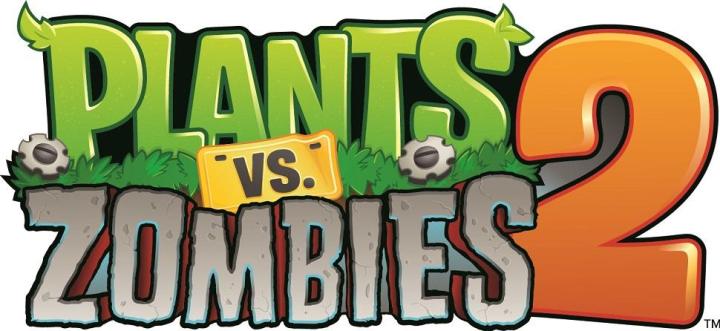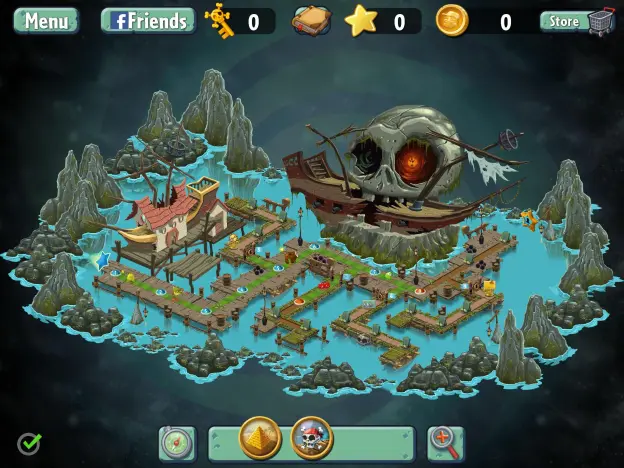
The subtitle to PopCap’s best-selling smash Plants vs Zombies unintentionally has two meanings. The subtitle “It’s About Time,” is specifically a reference to the game’s setup, which sends players hurtling back in time in pursuit of a crazy neighbor’s favorite taco – it makes sense if you play it. The second, unintentional significance of the subtitle is directed at fans, who agree that it is about time that a sequel was released.

The sequel spans Ancient Egypt, pirate ships, the Wild West, and more. It features a new world map that makes exploration part of the game, and it also sprinkles in elements like touch-controlled, god-like player powers, and plant food that supercharges your fighting flora for extra-strong attacks and incredible comebacks. But the biggest change may be that it’s free-to-play, with microtransactions sprinkled in.
The original iOS game was a huge hit for PopCap, both critically and commercially. In its first nine days the game sold over 300,000 copies, and it generated over $1 million. It then went on to receive several awards and nominations for both the best mobile game of the year, and just the best game regardless of platform. A sequel was inevitable, but moving away from the proven financial model that worked for the first game was a bold move for the developer.
We recently had the chance to sit down with PopCap’s Bernard Yee, senior producer and avid plant food fan, about the perils of altering a perfectly simple formula, the benefits of going free-to-play, and more.
What’s your history with PopCap?
I joined the company about a year ago [as] senior producer for Plants vs. Zombies 2. I was previously at Bungie working on Destiny and some of their other, mobile stuff. Worked across the game industry; worked on Everquest, a little Rock Band, Atari on Neverwinter Nights, Test Drive Unlimited—so I’ve been around a little bit and I came here to work on PvZ.

What was the motivation behind going free-to-play?
In the mobile space, the way to reach the most players is free-to-play, and PvZ is one of those franchises that appeal to everyone from, you know, moms and dads to WoW hardcore guild raid guys. Like, they love the game. Everyone loves the game. So when you have something that broad appeal you want to reach as many people as possible, and free-to-play’s the way to do it. And we wanted to do it, obviously—we call it the PopCap way and I like to think of it as the “un-evil” way. You know, Google says “Don’t do evil” or “Don’t do bad stuff.” We wanted to do it in a way that made sense and would never frustrate the player, right?
We didn’t want to put hard gates and pay walls and energy timers in front of people for PvZ. We wanted to make it so that a player could experience 95-percent of the content, including start to finish, without paying anything. And the way to do that obviously is you get them to unlock worlds with stars and to go back and get stars you have to replay levels. But we don’t want you to replay the same level over and over again—we gave you different challenges, you know, so that each world – each level – has a series of escalating challenges to get stars from. So it could be “Don’t lose more than two plants” or “Don’t plant more than – don’t plant in these rows – or these columns, rather – don’t spend any sun for 45 seconds.” It has the benefit of forcing you out of your comfort zone and try new plants, try different strategies – it’s not this repetitive gameplay. So I think we did it in a really player-friendly way.

Yes, and I think, well, you know – if you remember way back in the day, like back when Id [Software] started with Commander Keen, they had the shareware model. And so did PopCap, right? You could download Bejeweled and play a little bit for free, and then you had to pay more money to continue. So there’s always been something like that that’s been brewing out there.
But yes, for sure, it wasn’t, like, the major business model. And that’s what I mean by, you know, releasing PvZ 2 [free-to-play] in today’s world. That’s the right decision. You know, we get to reach a lot of players with it. So I think that that’s really – and again, I think our main pillar is game quality – it’s got to be a good game. Doesn’t matter how you want to charge for it; if it’s not a good game and you’re not keeping the player happy, if you’re trying to capitalize on frustration, that’s bad. And the team top-to-bottom believes that.
Do you think the free-to-play model is good for the whole industry?
Well, it’s hard to speak other than for PvZ, but if you were to really get me to answer the question I’d say yes, because I grew up as a gamer, and I grew up as like a nerdy gamer – I’d sit around and I’d play on my Apple II and I wouldn’t go talk to girls, and I wouldn’t, you know, whatever it was. That was a thing, and I was like, “oh, you get picked on because you’re a nerd,” and people think “You play video games!? That’s, like, for nerds!” It was this sort of thing in the corner.
“…free-to-play has done more to make everyone a gamer than almost anything else.”
I wanted everybody to be a gamer. I want everybody in the world to play games. So I think anything that allows us to do that is a good thing. How you do it -PopCap has a way. Here’s how we’re going to do it. We think this is the right way to do it. How other companies want to do it, I have no say over that.

It’s going to sound simple, but it never is, the games have got to be good, and … your team has to have focus and vision, and you have to be resourced to do it well. You have to hire the right people, but it all comes down to game quality, right? If I can’t believe that, then I’m not showing up to work in the morning. The game has to be good. And it’s hard to make good games. This is true everywhere.
“You have to hire the right people, but it all comes down to game quality, right? If I can’t believe that, then I’m not showing up to work in the morning.”
We paid attention to all that, and certainly working at PopCap it’s a cultural expectation that we do that. That’s what we do. That’s what a PopCap game is.
What kind of challenges has the expansion into other countries presented? I know the story earlier this month was that the game was too difficult in China.
So the China version of PvZ 2 is not just localized, we call it “culturized.” The kind of games that succeed in China or Korea, their audiences—or even Japan – their audiences are used to different mechanics sometimes. I mean, if you look at the difference between Oblivion or Fallout and Final Fantasy, they’re [all] RPGs, but there are very different conventions that work in both. So you have to build games, ideally, that work toward local conventions.
I know that there’s been some feedback that the game is “more hardcore,” or tougher in China. I don’t know, that may be true. It’s certainly different, and that team [in China], they know best. But I think that they tried to build a game that fits their audience, and I think they’ve done pretty well.

So EA’s been super supportive. I mean, when you have a billion, multi-billion dollar company behind you, it allows you to invest more for quality, and spend some time. On the converse of that is they want to understand where the money’s going and, they want to know how much progress have you made, [they do] reviews, and a formal process which as a producer I love, because I think process and clear expectations is really important.
I’ll give you an example. We needed to save memory in our game, and we have very specific fonts and a style that we wanted to use. And we were doing all these bitmaps and loading stuff in memory and having to load the whole font set for character sizes that was really, you know, kind of bloaty. And EA had a font solution that we were able to use and integrate that allowed us to have a font, and scale it arbitrarily without, you know, eating our memory budget up. And if we were just PopCap we wouldn’t have had that. And those are little things, but that allows us to save more memory for ambient animations. That stuff is really important, and EA had it and it was great. So it’s a clear example of how, I think, working with EA has given us access to things that we would never have written ourselves for this game, technology-wise.
One of the things that made the original game so universally loved was just its pure simplicity. Was there worry that changing the formula would make it too complex for the most casual players?
Yeah, definitely. I mean, that was a big design consideration. It’s hard to add depth without complexity, so it was something we struggled with and worked on, and we felt like we reached a good point with it.
So not too much, not too little, you know, enough so the player doesn’t feel like they’re hoarding it [like] how you hoard ammunition in Resident Evil. We didn’t want to do any of that. We wanted to make the player feel like this is a fun thing. You don’t have to worry about your inventory – like, this is not a stress. So it takes time, but I think we’ve always – when we make decisions – we always try to keep in mind our audience.


